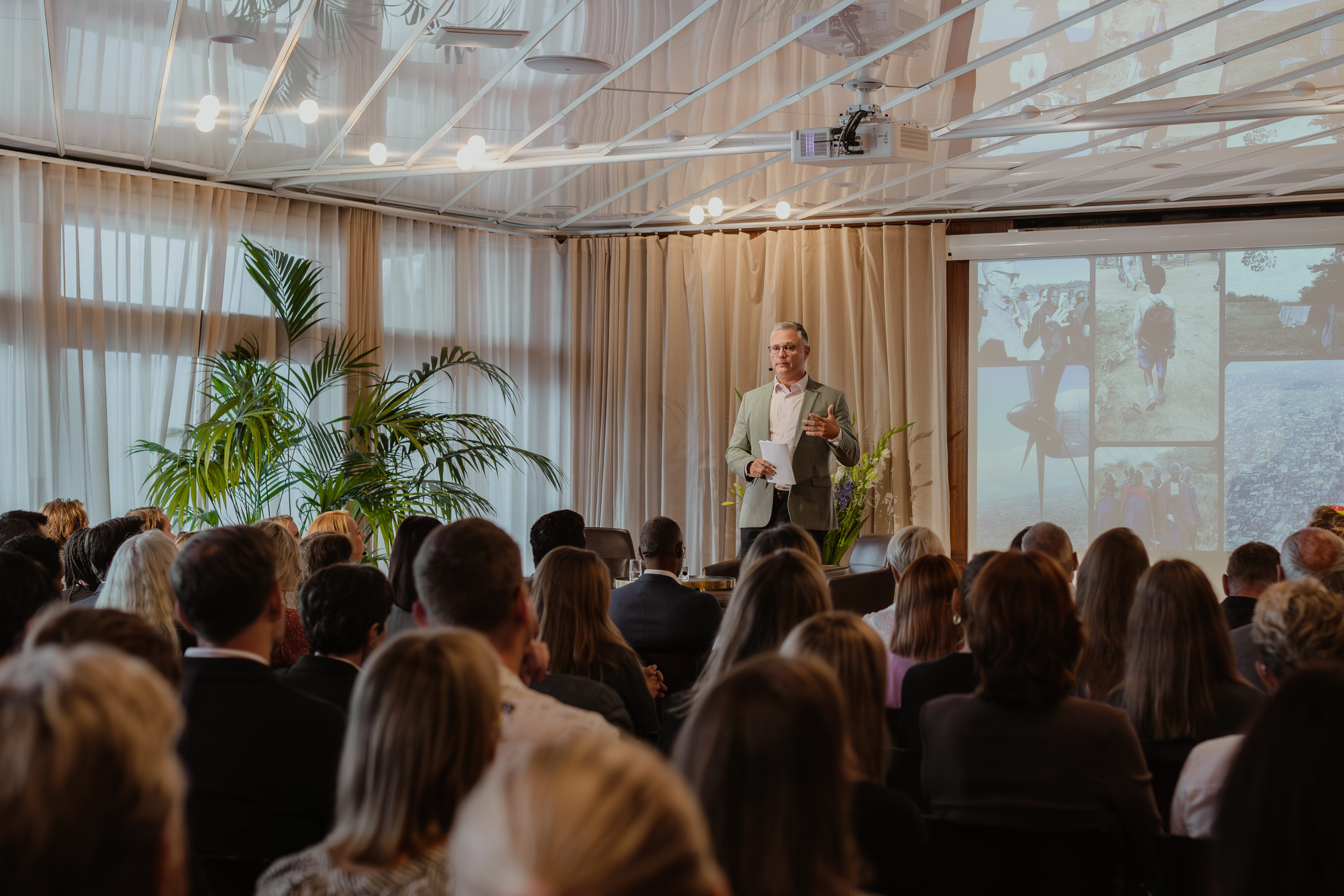Every 90 seconds, a child dies from a water-related disease. This stark reality represents one of the most pressing humanitarian crises of our time, affecting over 2 billion people globally who lack access to safely managed drinking water at home. Yet behind these overwhelming statistics lies a more complex story about how water scarcity ripples through entire communities, shaping health outcomes, educational opportunities, economic possibilities, and human dignity in ways that most of us rarely consider.
In East Africa, where organizations like Operakällaren Foundation have focused their efforts for over a decade, the water crisis manifests in devastating yet transformative ways. lt’s a region where the absence of clean water creates profound challenges, but also where access to clean water creates remarkable opportunities for entire communities to flourish.
![]() The Reality of Water Scarcity in East Africa
The Reality of Water Scarcity in East Africa
Ethiopia exemplifies both the severity of the water crisis and the transformative power of sustainable solutions. With a population exceeding 120 million people, approximately 60 million Ethiopians still lack access to clean water-more than the entire population of the United Kingdom. Only 42% of Ethiopians have access to basic water services, and the situation becomes even more dire in rural areas, where just 39% have coverage. Women and children in these communities walk an average of 6 hours daily to collect water, while 70% of health problems directly link to poor water and sanitation conditions.
The situation in Kenya, where many international water initiatives began their work, presents similar challenges with approximately 17 million people still lacking clean water access. Tanzania mirrors these struggles, with rural communities particularly affected by unreliable water sources and inadequate infrastructure. These numbers, however, only tell part of the story. The real impact becomes clear when you understand how water scarcity affects every aspect of daily life.
Consider the morning routine in a water-scarce community. Before dawn breaks, women and young girls begin their daily journey to distant water sources. They walk for hours carrying empty containers, often facing dangers from wild animals or unsafe terrain. Upon reaching a water source-perhaps a muddy river shared with livestock or a well with long queues-they may wait hours more before filling their containers with water that may not even be safe to drink. The return journey, now carrying 20-40 kilograms of water, requires several more hours of walking. By the time they return home, the entire day has been consumed by this single task, leaving little time for education, income generation, or the countless other activities that could improve their quality of life.
This daily reality creates a cascade of consequences that extends far beyond the immediate challenge of thirst. When families spend entire days collecting water, children miss school. When girls are kept home to help with water collection, they lose educational opportunities that could transform their
futures. When women cannot pursue income-generating activities because of time spent walking for water, entire families remain trapped in poverty.
Health Beyond Survival
Clean water represents far more than the difference between life and death, though that difference remains critically important. Waterborne diseases like cholera, typhoid, and dysentery claim hundreds of thousands of lives annually in East Africa, with children under five particularly vulnerable. Diarrheal diseases remain a leading cause of death in this age group, representing not just individual tragedies but the loss of human potential on a massive scale.
The health implications extend beyond acute illness to chronic conditions that affect cognitive development, physical growth, and long-term quality of life. Children who repeatedly suffer from waterborne illnesses experience stunted growth and impaired cognitive development. Dehydration and malnutrition become constant companions, creating vulnerabilities to other diseases and reducing children’s ability to learn and thrive even when they do attend school.
For pregnant women, water scarcity creates particularly acute challenges. The physical demands of water collection during pregnancy increase risks of complications, while lack of clean water during childbirth contributes to maternal mortality rates that remain tragically high across much of East Africa. The ripple effects touch every aspect of reproductive health, from prenatal care accessibility to postpartum recovery.
Yet when clean water becomes available, the health transformations prove remarkable and swift. Communities with new water access typically see childhood illness rates drop by 50-60% within the first year. Hospital visits for waterborne diseases decline dramatically. Children gain weight, grow taller, and demonstrate improved cognitive function. These aren’t gradual changes measured over decades
-they’re transformations visible within months of improved water access.
Education as Liberation
Perhaps nowhere do the transformative effects of clean water become more evident than in education, particularly for girls. In water-scarce communities, school attendance patterns directly correlate with water availability. During dry seasons, when water sources become more distant and less reliable, school attendance plummets as families prioritize water collection over education.
The gender dimension of this challenge proves particularly striking. While boys may also miss school to help with water collection, girls bear a disproportionate burden. Cultural expectations often designate water collection as women’s work, meaning girls learn from an early age that their primary responsibility involves ensuring their family’s water supply. As they reach adolescence, additional challenges emerge around menstrual hygiene management in schools lacking proper water and sanitation facilities.
When communities gain access to clean water sources, educational transformations follow quickly. Girls’ school enrollment typically increases by 35-40% within the first year of improved water access. More importantly, completion rates improve dramatically as families no longer need to choose between education and survival. The academic performance of all children improves as they arrive at school healthier, more alert, and with more time available for homework and study.
These educational improvements create intergenerational changes that extend far beyond individual families. Educated girls become educated mothers who prioritize their own children’s education. They develop skills that enable income generation and community leadership. They become advocates for continued improvements in health, education, and women’s rights within their communities.
Economic Transformation Through Time
The economic impact of water scarcity extends far beyond the immediate costs of purchasing water or medical treatment for waterborne illnesses. When families spend 6-8 hours daily collecting water, they lose time that could be invested in income-generating activities, agricultural improvement, or skill development. This “time poverty” keeps families trapped in subsistence living with little opportunity for economic advancement.
Women bear the greatest burden of this time poverty, as cultural expectations typically assign water collection responsibilities to them. This means that half the adult population in water-scarce communities remains largely unable to participate in economic activities that could improve family welfare. The lost potential is staggering-not just for individual families, but for entire communities and national economies.
When water access improves, economic transformations often exceed expectations. Women use their newly available time to start small businesses, often beginning within 6-12 months of water access improvement. These might include food preparation and sales, small-scale agriculture, crafts production, or service provision within their communities. Household incomes typically increase by 15- 25% within two years of improved water access, not through external aid or intervention, but through unleashed human potential.
The multiplier effects extend throughout communities as local markets become more active, service businesses emerge to meet new economic activities, and investment in children’s education and healthcare increases. Property values rise in areas with reliable water infrastructure, creating additional economic benefits for longtime residents.
Success Stories from the Field
The Wega Tebeta community in Ethiopia provides a concrete example of transformation through water access. Before their water project, funded through Operakallaren Foundation’s 2021 gala, women in this community of over 4,000 people walked 4-6 hours daily for water. Children frequently suffered from waterborne illnesses, school attendance remained sporadic, and economic opportunities were severely limited.
The changes following water project completion were both immediate and profound. Travel time for water dropped to under 30 minutes, childhood illness rates decreased by 60%, and girls’ school enrollment increased by 35%. Perhaps most remarkably, three new small businesses started by women in the community within the first year of water access. These weren’t businesses dependent on outside support or microfinance-they emerged organically as women gained time and energy to pursue economic opportunities.
Each water project creates multiplier effects extending far beyond immediate beneficiaries. When one community gains water access, neighboring communities benefit through shared knowledge and maintenance skills, increased economic activity and trade, reduced burden on regional healthcare facilities, and enhanced stability and cooperation across the broader area.
Technical Solutions That Create Lasting Change
Effective water projects in East Africa employ various technical approaches depending on local conditions, community size, and long-term sustainability requirements. Borehole wells with hand pumps serve communities of 300-500 people, typically lasting 15-20 years with proper maintenance while costing approximately $8,000-12,000 per well. These systems require training local technicians for repairs and establishing community water committees for ongoing management.
Solar-powered water systems serve larger communities of 1,000 or more people, representing environmentally sustainable solutions with reduced long-term operating costs. While initial investments range from $25,000-40,000 per system, their 20-25 year lifespan and lower maintenance requirements often make them cost-effective for larger communities.
Spring protection projects offer lower-cost solutions where natural water sources exist but require protection from contamination. Serving 200-300 people typically, these projects cost $3,000-6,000 while providing reliable access to naturally occurring clean water sources.
Every effective water project includes comprehensive community training covering water committee formation, technical maintenance, hygiene and sanitation education, and financial management for ongoing costs. This community ownership approach ensures projects continue functioning years after installation while building local capacity for broader development initiatives.
Looking Forward Through Partnership
The recent partnership between Operakallaren Foundation and charity: water represents evolution in approach to water crisis solutions. This collaboration brings enhanced transparency through real-time tracking of every project with GPS coordinates and photographic documentation, improved technology with advanced monitoring systems ensuring long-term functionality, expanded reach enabling larger and more impactful projects in Ethiopia, and greater efficiency through streamlined processes maximizing impact of every donated dollar.
The water crisis in East Africa remains solvable, but success requires sustained commitment and strategic action. Evidence from communities across the region demonstrates that with appropriate partnerships, community focus, and continued support, lasting change becomes not just possible but inevitable.
Understanding why clean water changes everything means recognizing that access to this basic necessity unlocks human potential in ways that extend far beyond health and survival. It enables education, creates economic opportunities, empowers women, strengthens communities, and provides foundation for broader social and economic development. When clean water flows, everything else becomes possible.
Clean water access represents more than infrastructure development-it catalyzes human potential and community transformation. Understanding these connections helps explain why water projects create such profound and lasting change in the communities they serve.



